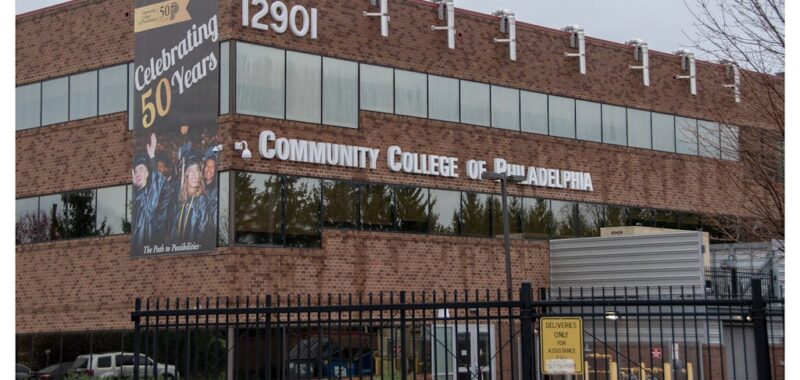The premise of âfree collegeâ programs popping up around the country in recent years is that bringing the price of higher education down to nearly nothing will spur more students to enroll and earn degrees.
But is that what actually happens?
David Monaghan, an associate professor of sociology at Shippensburg University of Pennsylvania, has been digging into that question in a series of recent research studies. And the results indicate that not all of these free college programs have the intended effect â and that how a program is set up can make a big difference.
In a working paper the professor co-authored that was released last month, for instance, Monaghan compared two free college programs in Pennsylvania to dig into their outcomes.
One of the programs is the Morgan Success Scholarship at Lehigh Carbon Community College, which is available to students at Tamaqua Area High School who enroll right after completing their high school degree. Qualifying students are guaranteed fully paid tuition, with the program paying any gap left after the student applies for other financial aid and scholarships (a model known as a âlast dollar, tuition-only guarantee.â)
The other is the Community College of Philadelphiaâs 50th Anniversary Scholars Program, which is available to students who graduate from a high school in Philadelphia and meet other merit criteria. It is also a âlast dollarâ program that covers any tuition and fees not paid from other sources. The students must enroll immediately after high school graduation, have a low enough income to qualify for a federal Pell scholarship, file their application for federal financial aid by a set date and enroll in at least six credits at the college.
The Morgan Success Scholarship seemed to work largely as its designers hoped. The year after the program started, the rate of college-going at Tamaqua Area High School jumped from 86 percent to 94 percent, and college-going increased another percentage point the following year. And the number of students graduating from Lehigh Carbon Community College with a two-year degree increased after the program was created.
But something else happened that wasnât by design. The free-college program appears to have led some students who would have enrolled in a four-year college to instead start at the two-year college â where they may or may not end up going on to a four-year institution. There is a chance, then, that the program may end up keeping some students from finishing a four-year degree. âOn balance, the program expands access to postsecondary education more than it diverts students away from four-year degrees, though it does appear to do this as well,â the paper asserts.
The free-college program at Community College of Philadelphia, meanwhile, didnât seem to move the needle much at all.
âI expected to see an enrollment boost, and I didnât even see that,â says Monaghan.
In other words, it isnât even clear from the data that the free college effort sparked any increase in enrollment at the college.
The reason, he says, may be that the leaders of the program did not do enough to spread awareness about the option, and about what it takes to apply. Since the program was open to all high schools in the city, doing that communication was more difficult than in the case of the other program they studied.
âOur analyses suggest that a tuition guarantee, by itself, will not necessarily have any impact,â he and his co-author wrote in their paper. âIf a program falls in the forest and no one hears it, it will not shift enrollment patterns.â
Monaghan says that the findings show that more attention should be paid to the details of how free college programs work â especially since many of them are full of restrictions and require students to jump through a series of hoops to take advantage of them. That can be a lot to ask a 17- or 18-year-old finishing high school to navigate.
âWe really overestimate what people are like at the end of high school,â and how savvy theyâll be about weighing the costs and benefits of higher education, he argues. âThere hasnât been enough research on free college programs in terms of how they are implemented and communicated,â he adds.
Itâs worth noting, of course, that some free college programs do significantly increase enrollment. And that can create another unintended side effect: straining resources at two-year colleges.
That was the case in Massachusetts, where the MassReconnect program that launched in 2023 led more than 5,000 new students to enroll the first semester it was available, according to a report from the Massachusetts Department of Higher Education.
As a result, the stateâs 15 community colleges have struggled to hire enough staff â including adjunct instructors â to keep up with the new demand.
What did that program do to spark so much interest? Unlike the programs studied in Pennsylvania, MassReconnect is available to not just people freshly graduating high school, but to anyone over 25 years old â a much larger pool of possible takers.
Another working paper by Monaghan, which looked at as much available research as he could find on free college programs, found a large variety of impact.
And that may be the biggest lesson: For free college programs, the devil really is in the details of how they are set up and communicated.

